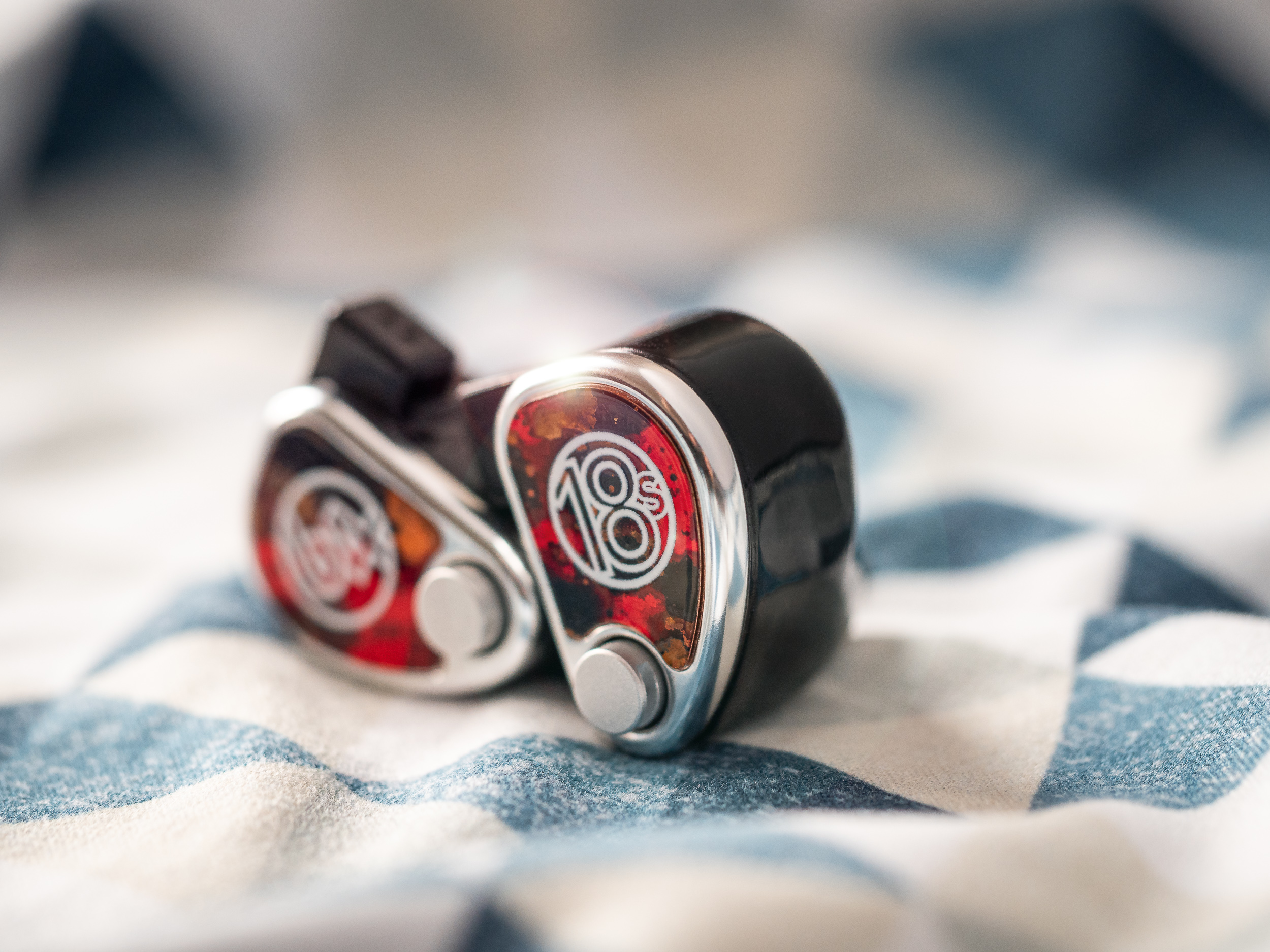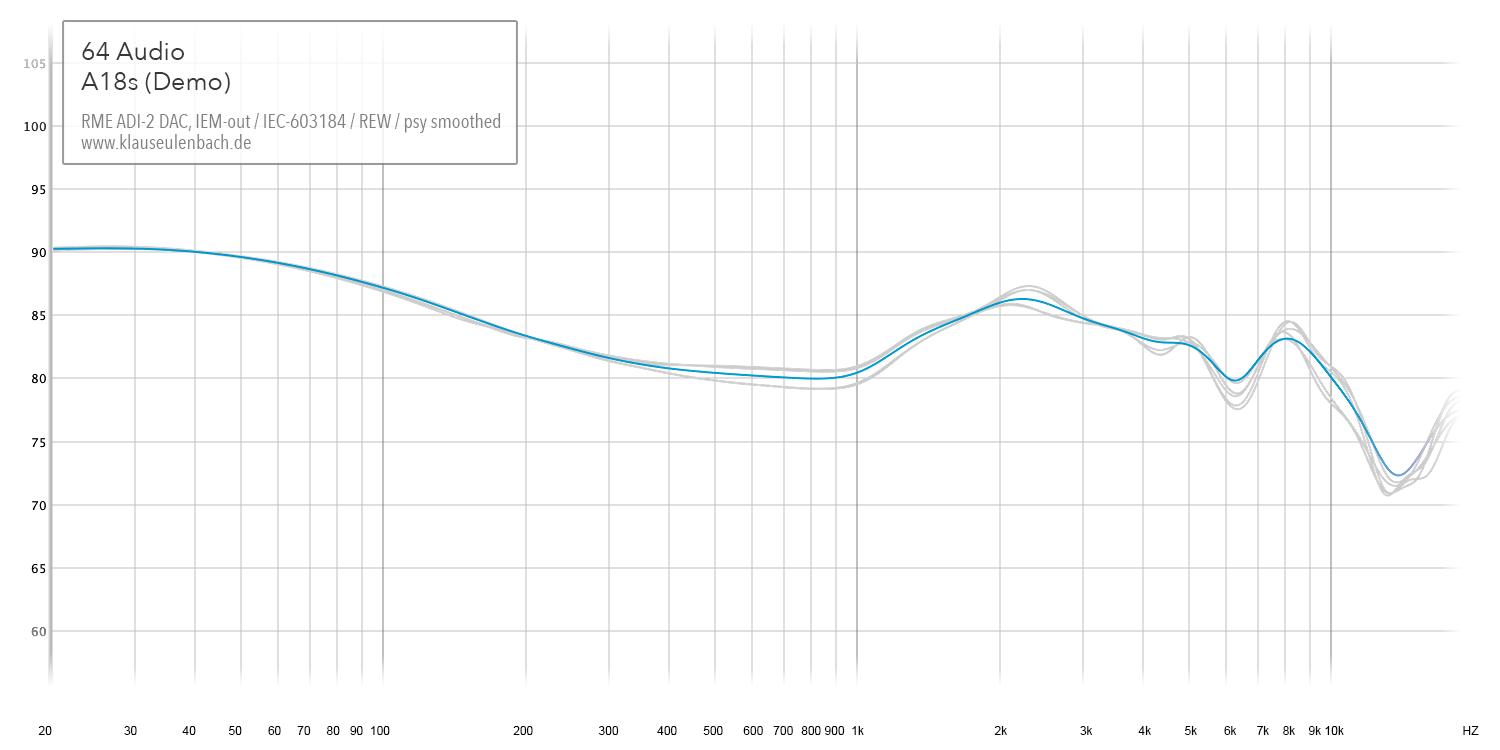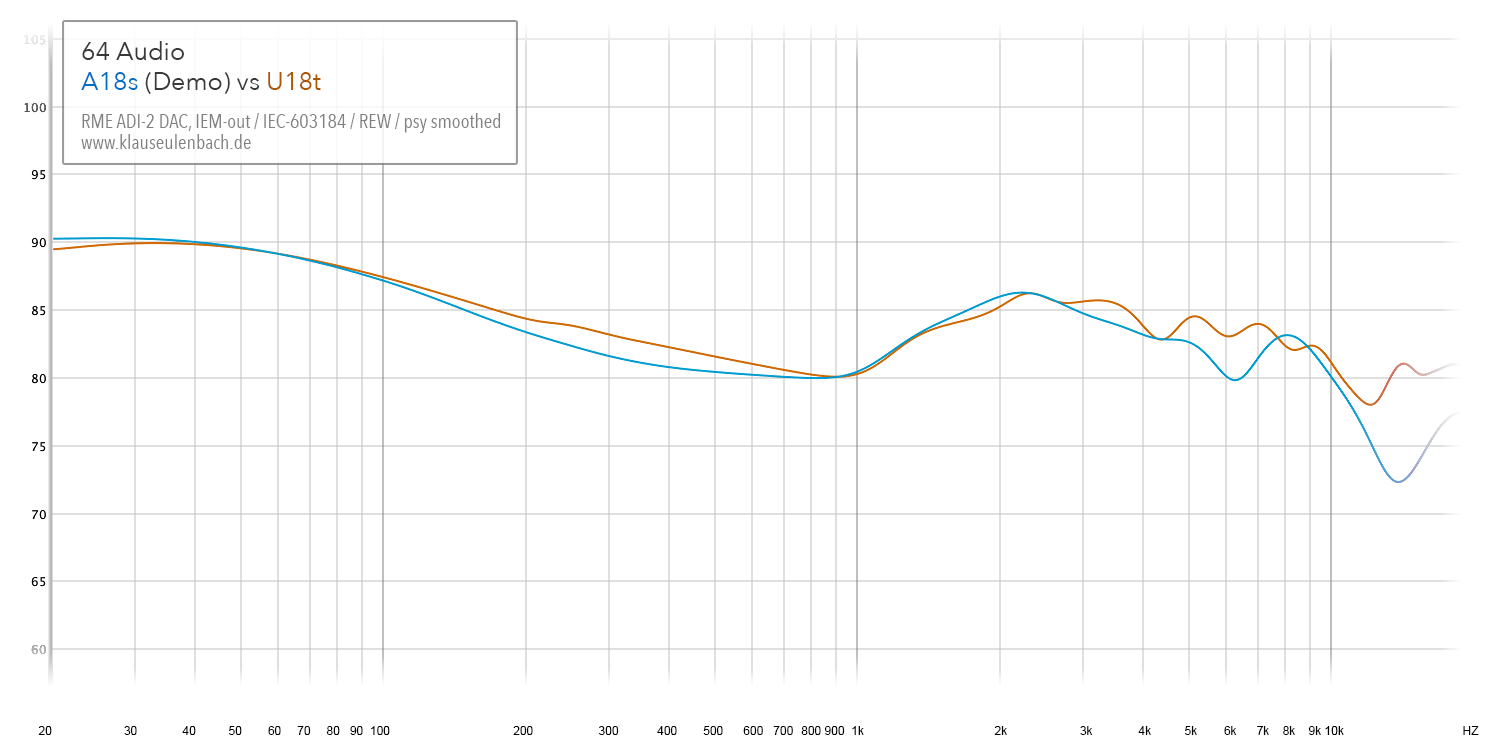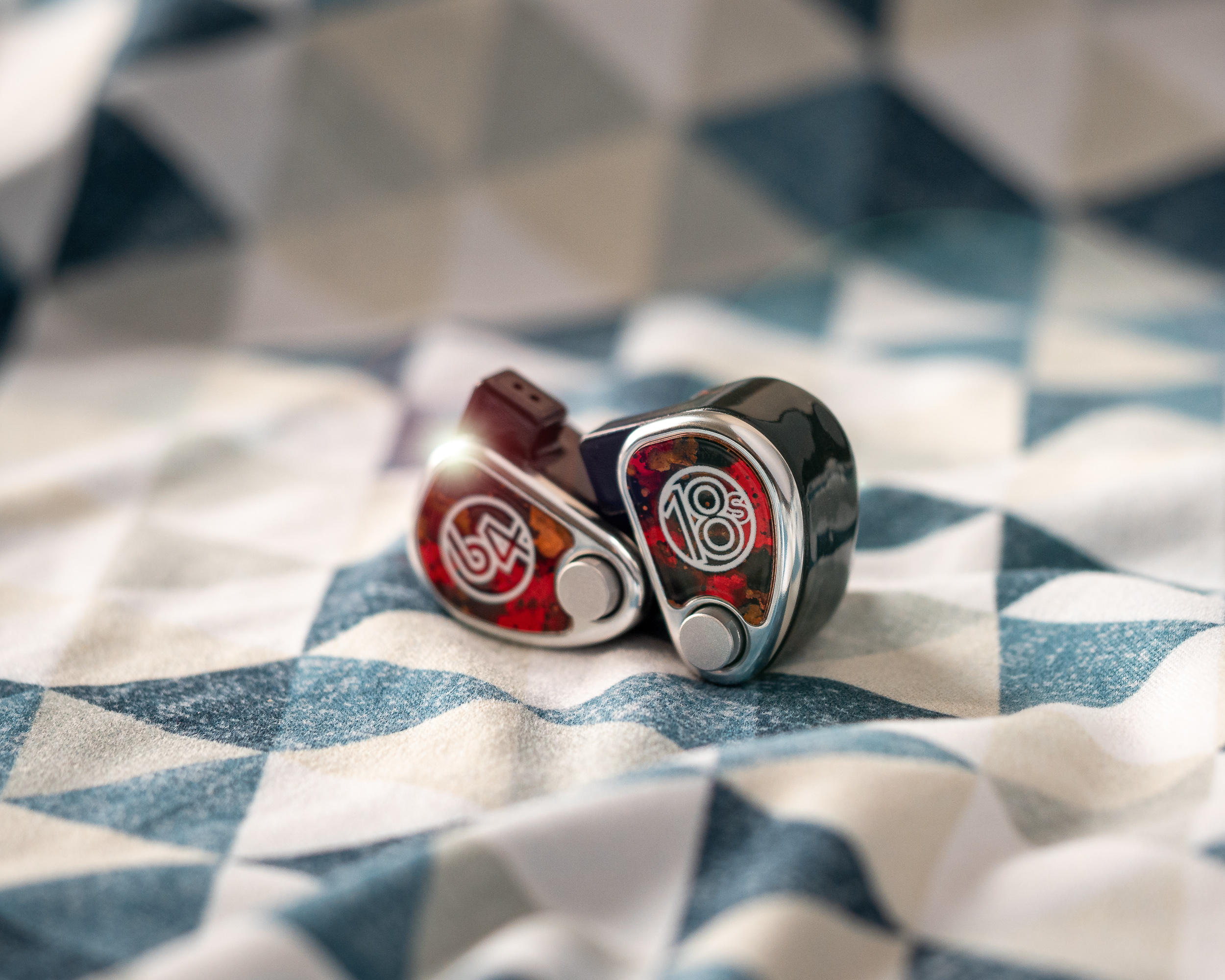
64 Audio has released a new addition to the studio & stage monitoring flagship A18 Tzar. The new A18s is advertised as being more suited towards professionals, making room for the A18t to grab the audiophile audience. Well, ideally I don’t see a difference in the demands of either, so it will be interesting to see what has changed.
64audio.com
Quick Navigation
Changes
For one, 64 Audio claims to have made the A18s more efficient. I cannot confirm that claim because the A18t is 2-3 dB louder with all of my amps at the same volume setting. However, the A18s have less treble and thus create less fatigue at higher listening volume. I guess that is what 64 Audio was trying to say.
Second, the A18s now also has LID – linear impedance design. It was always a bit confusing why all of the stage monitors have this feature except for the A18t. The tia Trió also has LID, but then again, the tia Fourté does not. Based on my experience, LID does not limit the effects of synergy pairing or cable rolling. But it does reduce negative influence of high output impedance. IMO, the A18t is not particularly sensitive to the impedance. Further, who is willing to spend $3.000 on an IEM probably has a good headphone output anyway.
Frequency Response
This is a measurement of the 64 Audio A18s demo in a universal shell.
This is a raw and uncompensated curve. It gives us information about the tonality and the sound tuning of an IEM. (Not necessarily about the sound quality.) If you are not sure how to read it, here is an introductory post: Understanding Raw Frequency Graphs

Compared to U18t
The demo shell of the A18s is different to the A18t. The new S version has the same universal design as the Nio, which is a bit more comfortable but makes it a little trickier to get the exact same fit for detailed A/B-comparisons with the previous U18t. Anyway, here is a visual representation of what my IEC picked up.

The bass shifted stronger to the sub-bass area. For 64 Audio, the U18t was very unique in this regard. While the U18t have a warm and full-bodied bass, all their other models have a sub-bass heavy curve similar to the A18s, including U12t, N8, A6t, A4t, tia Trió and tia Fourté.
Personally, I actually prefer the U12t over the U18t in terms of tuning of the bass. So the changes to the A18s are for less bloat, snapier punch and more rumble. However, the U18t is better for bass texture and also for a more relaxed presentation. Consider this in case that bass can be fatiguing to you.
Changes in the midrange are subtle. The main difference is that the lower midrange is definitely thicker on the U18t and that the A18s has more spacial awareness in comparison.
The treble curve looks a bit smoother on the U18t, but I actually think that this is due to the difficulty of finding the perfect position of the IEM on the measurement rig. But maybe 64 Audio has replaced the high-mid driver or the crossover on the A18s – that I don’t know. I would be very cautious to claim that the U18t has a more refined treble, but anyway the treble of either is simply superb. I can confirm, however, that the A18s has less treble quantity overall.
Considering a Custom-Fit A18s
How would this translate to the custom-fit? As mentioned, I have noticed some differences of the custom-fit and universal demo of 64 Audio IEM. Due to perfect fit, the bass is tighter. I believe with CIEM the whole audio system is more stable and creates less movement on its own, resulting in a cleaner output. (Consider people use speaker spikes and marble plates for a similar effect.) This also helps to improve the soundstage and resolution overall.
The treble is a bit more tricky to predict. The 64 Audio tia treble driver is perfectly adjusted to aim at the ear drum, past any bends of the ear canal – this is impossible to achieve with a universal-fit. In my case, the treble of the A18t is darker and more natural compared to the universal U18t. So keep in mind that this change would also apply to the A18s. If you think the demo sounds dark or warm, the CIEM will do even more so.
Whom Is the 64 Audio A18s For?
How suitable are the 64 Audio A18s for audiophiles? In short: Very! The 64 Audio A/U12t are probably one of the most popular high-end IEM of all time. Professionals, on stage and in studio, as well as audiophiles share their preference with this model. Ultimately, the A18s is a refined A12t.
However, the previous flagship, the A18t, still has the best treble I have yet heard. I would not want it to sound any darker. Also, the bass is more relaxed and causes less fatigue while enhancing texture detail. For Classical music, I would probably prefer the A18t. With anything more modern, like Electro, Rap, Pop, etc., I have to give the nod to the new A18s.

